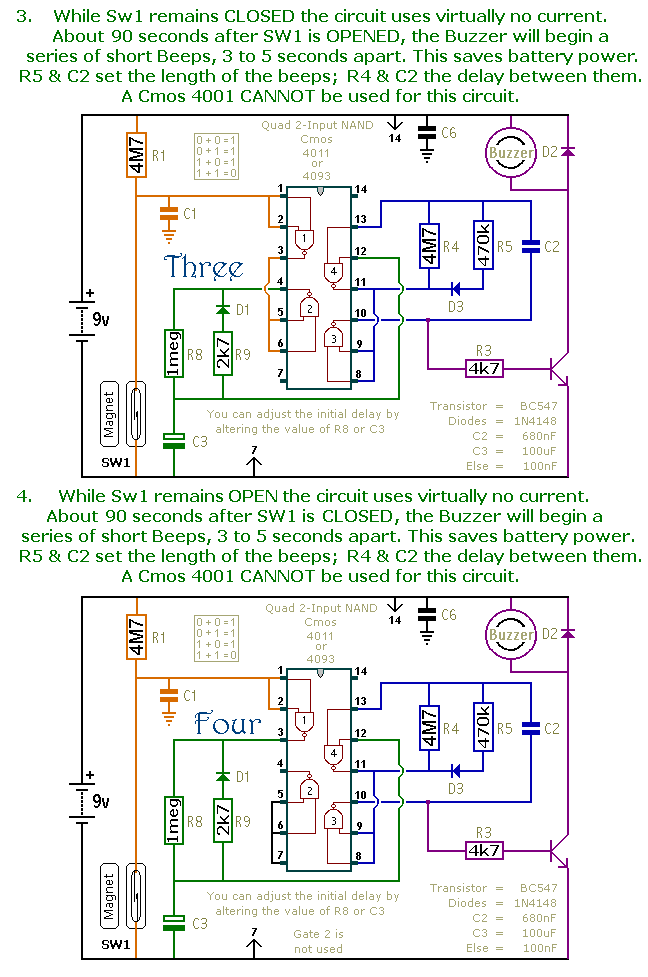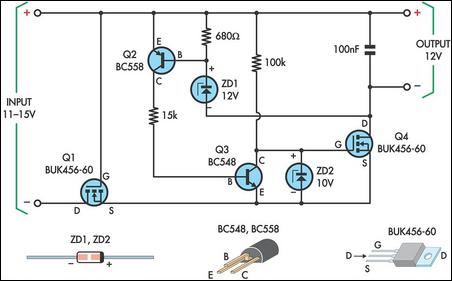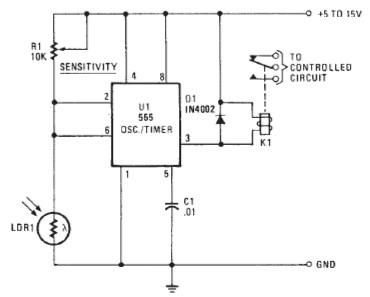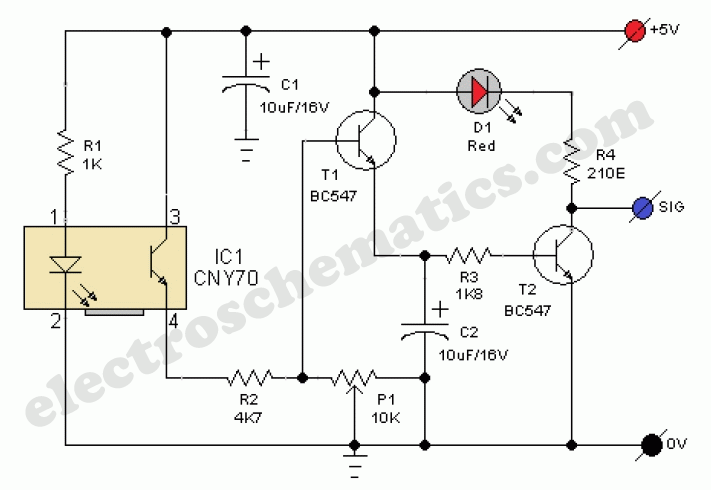
Low Cost Burglar Alarm For Boats

This low-cost burglar alarm utilizes a 12V strobe light and a truck reversing horn as the visible and audible outputs, respectively, while the alarm system operates on a 12V power supply.
The burglar alarm circuit is designed to provide an economical solution for security applications. It integrates a 12V power supply, which serves as the main energy source for both the strobe light and the reversing horn. The strobe light functions as the visual alert mechanism, flashing brightly to draw attention when the alarm is triggered. The truck reversing horn acts as the audible component, emitting a loud sound that serves to deter intruders and alert nearby individuals.
The core of the alarm system includes a motion sensor or a contact switch that detects unauthorized entry. When triggered, the sensor sends a signal to the control unit, activating the strobe light and the horn simultaneously. The circuit may also include a delay timer to prevent false alarms caused by pets or environmental factors.
In terms of construction, the circuit typically involves a relay that allows the low-power control signal from the sensor to switch the higher power loads of the strobe light and horn. The relay is essential for isolating the control circuit from the higher voltage components, ensuring safety and reliability.
For additional features, the circuit can be equipped with a reset switch that allows the user to deactivate the alarm after it has been triggered. This functionality is crucial for user convenience, especially in scenarios where the alarm may be activated accidentally.
Overall, this burglar alarm system is an effective and cost-efficient solution for enhancing security in residential or commercial settings, utilizing straightforward components to deliver reliable performance.This low-cost burglar alarm employs a 12V strobe light and a truck reversing horn as the visible and audible alarm outputs while the alarm itself is a 12V.. 🔗 External reference
The burglar alarm circuit is designed to provide an economical solution for security applications. It integrates a 12V power supply, which serves as the main energy source for both the strobe light and the reversing horn. The strobe light functions as the visual alert mechanism, flashing brightly to draw attention when the alarm is triggered. The truck reversing horn acts as the audible component, emitting a loud sound that serves to deter intruders and alert nearby individuals.
The core of the alarm system includes a motion sensor or a contact switch that detects unauthorized entry. When triggered, the sensor sends a signal to the control unit, activating the strobe light and the horn simultaneously. The circuit may also include a delay timer to prevent false alarms caused by pets or environmental factors.
In terms of construction, the circuit typically involves a relay that allows the low-power control signal from the sensor to switch the higher power loads of the strobe light and horn. The relay is essential for isolating the control circuit from the higher voltage components, ensuring safety and reliability.
For additional features, the circuit can be equipped with a reset switch that allows the user to deactivate the alarm after it has been triggered. This functionality is crucial for user convenience, especially in scenarios where the alarm may be activated accidentally.
Overall, this burglar alarm system is an effective and cost-efficient solution for enhancing security in residential or commercial settings, utilizing straightforward components to deliver reliable performance.This low-cost burglar alarm employs a 12V strobe light and a truck reversing horn as the visible and audible alarm outputs while the alarm itself is a 12V.. 🔗 External reference





